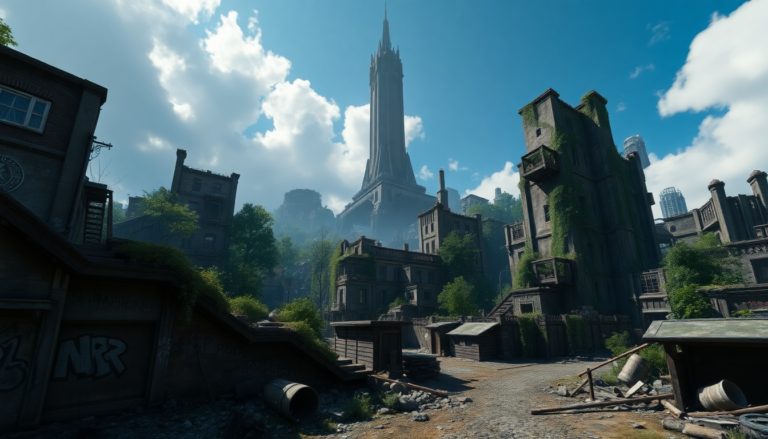Argomenti trattati
In the fast-paced world of video gaming, there’s an ongoing debate about open-world design—specifically, the balance between scale and immersion. Techland’s forthcoming title, Dying Light: The Beast, aims to shift this conversation by emphasizing how a meticulously crafted environment can outshine mere size. According to franchise director Tymon Smektala, the heart of an engaging open-world experience isn’t about how big it is, but about how real and interactive it feels to players.
The Philosophy Behind Dying Light: The Beast
In a recent chat with GamesRadar+, Smektala shared a refreshing take on open-world design. He pointed out, “Open worlds are not about scale. They’re about your feeling of being there.” This insight marks a significant shift in how developers approach world-building. Instead of merely crafting vast maps filled with empty spaces, Techland is focused on creating rich, detailed environments brimming with activity.
Smektala also highlighted a common pitfall of many open-world games today: players often find themselves traversing large areas with little to do. He remarked, “In other titles, there’s usually hubs of activities, and in-between them not much is really happening.” In response, Dying Light: The Beast is designed to keep players engaged at every turn. The game encourages constant interaction, ensuring that players remain deeply immersed in the action.
This philosophy shines through in the game’s layout. The smaller, denser world of Dying Light is crafted to provide a wealth of interactions, creating an unrelenting sense of urgency and excitement. Smektala believes this approach positions Dying Light as one of the most densely populated open-world games available, compelling players to explore and engage with their surroundings continuously.
The Role of Zombies in Enhancing Density
A standout feature of the Dying Light series is its focus on zombie encounters, which inherently boosts the game’s density. Smektala explained that having zombies scattered throughout the world creates an ever-present threat. He noted, “Whether that’s hordes of zombies or just single ones, Dying Light can offer a threat at any moment.” This constant danger not only raises the stakes but also enriches gameplay by keeping players on their toes.
However, Smektala recognizes that simply filling the world with enemies isn’t enough to create a captivating experience. The game must also offer a variety of engaging activities to keep players interested. Thankfully, the Dying Light series excels in delivering melee-focused, first-person gameplay that feels tactile and responsive, ensuring that every encounter carries weight.
Learning from Past Experiences
As Techland gears up for the release of Dying Light: The Beast, Smektala has candidly discussed the lessons learned from Dying Light 2. The studio is eager to address past missteps, and while it’s uncertain if they can recapture the magic of the original game, their commitment to improvement is clear. Smektala’s insights indicate that Techland is not only aware of the challenges but is actively working to enhance the overall experience for players.
Ultimately, the success of Dying Light: The Beast will depend on how well it balances the intricacies of its handcrafted world with the expectations of its player base. As the gaming community eagerly awaits its release, the big question remains: will this shift towards a more immersive, densely packed environment resonate with fans?

